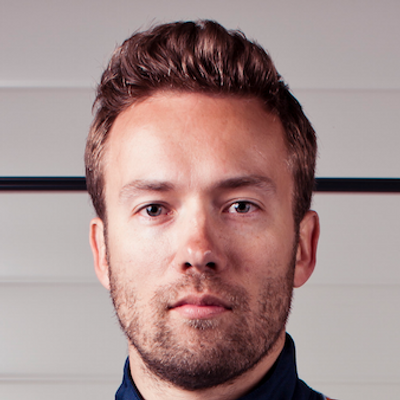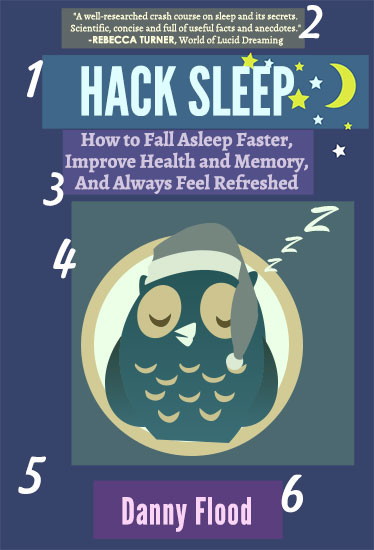Last week I wrote about the “Dreamlining exercise,” which is the best technique I know of to take on impossible goals. It’s the best launchpad to start from whenever you want to reinvent yourself.
Dreamlining forces you to look inward. “Dreamgoals” refer to goals that would change your life. These aren’t ordinary or common goals but ones that force you to think big, set at a level beyond where you’re at now. For inspiration, read this post about “The Greatest Goal Achiever” John Goddard, and his “Ultimate Bucket list.”
The next step is to drill down into the specifics. Determine the actual cost (whether time or money) needed to realize each goal, and the steps you’ll take today, tomorrow, and the next day to make it happy.
Brian Tracy – one of the greatest goal achievers alive, instructs us that when we write down our goals, to say “I am…” rather than “I will become…” In other words, when you have the mindset that you are already successful, the action follows the thought.
But we can take things even further, much further, than that.
The power of reverse engineering
To make our process even more potent – and make changes happen very quickly – we reverse engineer from the end result we want.
For instance, if your dreamgoal is to become a master at chess, learn the way that “child prodigy” Josh Waitzkin did: start by learning how to checkmate the king, and works backwards from there. Learn the specific moves to achieve the ultimate goal of chess.
But this is the opposite of what most people do. They don’t approach things this way. Most people will start by learning the rules of the game, or the opening moves.
But they don’t know how to win the game – which they should learn before doing anything else. Because it sets a precedent that makes everything before it fall into line.
How might you apply this to other areas, outside of chess? That will vary based on the pursuit you choose – but one of the worst things we can do is become addicted to the struggle. It’s like playing the game just to play it – and losing.
Don’t spend time with beginners just to make yourself feel better. These days – if you go on Facebook – there’s a community or hobby group for everything under the sun. We get a sense of security knowing that we’re part of a larger community, and that others are sharing our struggles.
But it’s far better to ditch security and befriend five people are already masters. Let the way that they think and do things become your own. It may make you uncomfortable; if it doesn’t, you’re not growing. You may be intimidated just speaking with them at first. But when you learn the endgame from them, everything else becomes far simpler.
For example, I once took on a contract job for a startup in Ho Chi Minh City. I prepped hardcore for the position, reading and brushing up all types of innovative marketing tactics on the plane to impress my client, a serial entrepreneur who has created and grown multiple seven-figure businesses.
When we begun working together, I was very thorough. I crossed all of the T’s and dotted every I. For a few days I worked my butt off to prepare the logo and brand design for one of his new companies. His remark?
“You’re spending too much time on that. It’s just a logo.”
I remember his words like it was only yesterday. But he was right. I was so obsessed with doing each thing perfectly, when good enough was enough. I didn’t realize that I was stressing too much over opening moves when our mission was to checkmate the king. The simple advice he gave me that day has provided a guiding hand in how approach my ventures since.
 Another fine example is that of David Heinemeier Hansson, founder of 37 Signals (now called Basecamp) and Ruby on Rails. David took up professional race car driving in his thirties. Initially, he started on the lower circuits, finishing around the middle of the pack.
Another fine example is that of David Heinemeier Hansson, founder of 37 Signals (now called Basecamp) and Ruby on Rails. David took up professional race car driving in his thirties. Initially, he started on the lower circuits, finishing around the middle of the pack.
But rather than trying to become the top dog at the lower levels and then moving up to a higher level, David would move up as soon as we eligible to qualify (such as finishing in the top ten). He jumped up several circuits this way, until he was competing (and eventually winning) at the highest levels.
When David returned to visit his home race track in Chicago, the same set of drivers still dominated the lower leagues.
He came back and effortlessly beat them.
Rule: Avoid the bottomless pit of abstract goals.
If a person wants to improve at chess, they figure: “I’ll just play more.”
This line of thinking is a trap.
This is the slowest, least effective way to attack a goal. To do it this way could means decades of “paying your dues,” expending effort just for the sake of expending effort. You work your way up slowly through the ranks to reach master status.
Abstract goals are not effective for several reasons: They aren’t accountable, measurable, or easy to adhere to. It’s like setting a goal to “get healthy,” and then going to the gym. That’s not as effective as saying “I’m going to gain 10 pounds of muscle in 45 days.” You then weigh yourself on a scale, take measurements, and track progress after two weeks.
Once you see those first results, something magic happens. It serves as positive reinforcement to continue – and to work even harder. You “intensify your desire over time,” as Napoleon Hill (the fellow to the right) teaches us to do in “Think and Grow Rich.”
Again, it all comes down to breaking things down into their component parts. Deconstructing our goals this way gets to the heart of the matter and makes things easy for us.
What we do today, becomes our destiny
Challenges are par for the course – as we become reach higher levels of success, we’ll face bigger challenges more often. Taking on bigger challenges today and tomorrow is how we improve upon the past, be more, and do more than we did yesterday.
Deconstruction is an effective plan to meet these challenges on the field of battle. This process proves its effectiveness whenever we are faced with difficult tasks, or obstacles that get in the way of what we want.
For instance: a while back I was taking a shower, and thought to myself: “I need to redesign my podcast icon.”
But I was clueless for ideas on how to go about it. What would make for a really good icon? It could easily become a mental monster that haunts my to-do list for weeks.
Instead, I’ll just identify the components of a good podcast image:
1) A fun, engaging photo
2) Illustrative typography
3) My logo
4) A fun / eye-popping color palette
Each of these individual parts could be addressed in a matter of minutes. I follow this process this whenever I take on any creative project, and it allows me to complete it much quicker.
 I always get compliments on my book covers. I can design each one in a single afternoon, because they have component parts too.
I always get compliments on my book covers. I can design each one in a single afternoon, because they have component parts too.
Once I’ve identified what these are, I can easily reproduce future book covers based on this template:
1) Area for the title, and unique typography
2) Area above the title for an endorsement
3) Subtitle below the title in a smaller font
4) Image in the center, below subtitle
5) Background color which serves as the book’s branding
6) My name as the author
Six component parts = one awesome cover.
Here’s the point of all this:
Breaking down mental monsters into small specific steps that can be easily acted upon saves a TON of time, stress, and mental ram. My book covers only take me a few hours to make, and most people say that they look great.
Now that you understand the potency of deconstruction, let’s rewind back to reverse engineering, with an example that illustrates how it can helps us.
Reverse Engineer Everything – and Watch Your Progress
In a past lifetime, I was enrolled in the Art Institute. Our professors there taught us a brainstorming process which was extraordinarily difficult and painfully slow.
For each creative project, we would need to perform weeks of research, using pencil and paper to come up with a hundred “comps,” creating rough drafts based on ten or so comps, getting feedback, revising, and polishing.
This entire process could take months – often just for a logo! The idea was that we would be working for huge corporations like Mitsubishi after school and billing them for thousands of hours of labor.
While that seems nice on paper… I need to get things done. You probably do, too.
Here’s what to do instead (it’s VERY similar to the chess example from earlier):
Rather than waste time drawing pointless doodles or racking your mind for ideas (that never seem to surface), let’s shortcut the creative process by borrowing concepts that other people have already come up with.

Zoltan Medvecky was a prize-winning art director in New York, during the golden age of advertising. Steven Pressfield, in his article titled “stealing without shame,” reveals the creative work habit that was the source of his fame.
Medvecky had a huge drawer full of magazines and photography books. He would find a layout that he loved from an editorial, steal it, and use it in his own advertisements. He would tweak the layout slightly for his own purposes, and the end result always looked incredible.
You and I don’t need a huge drawer full of files; because we have the internet. Here’s one of my favorite work habits, that can save you hours, days, and even weeks of brainstorming time:
First, I think about all of the keywords that are related to the topic I’m working on. I’ll circle back to the example of my recent book “Hack Sleep.”
Coming up with imagery for this book was difficult at first because I wanted to avoid any stereotypical tropes. Looking on Amazon, nine out of ten books covers in the “Sleep Disorders” category showed a cover of a baby sleeping on a pillow. They were ubiquitous! I sought to be different; unique in a good way.
In my notebook, I wrote down anything I could think of associated with sleep:
“Moon, night, darkness, bed, pillow, counting sheep, night owls, alarm clock, nightcap, teddy bear” and so on… exploring my mind for ideas that I might possibly be able to build on.
Once you have a list of keywords written down, visit Shutterstock.com and search the images on there to see what kind of concepts professional illustrators and photographers have come up with on there.
It’s really hard to do this exercise without finding well-executed conceptual ideas that you really love and that fit what you’re trying to do perfectly.
Back when I ran my digital advertising agency, I would sit down and perform this exercise with clients. I had to – because it’s exhausting spending months just trying to come up with a concept.
A client would say something like: “We want to portray alignment. We want to show that our interests are aligned with the clients.”
During the meeting, we went to Shutterstock, search “alignment,” and killer concepts would materialize out of thin air.
We ended up using a jigsaw puzzle piece with the logo – the missing piece that aligned with the client’s needs. It was a perfect fit – in more ways than one.
Thanks for reading this article, hope you enjoyed it. Now don’t stand on ceremony; go out and fucking do something amazing. Then write to me to tell me about it.


